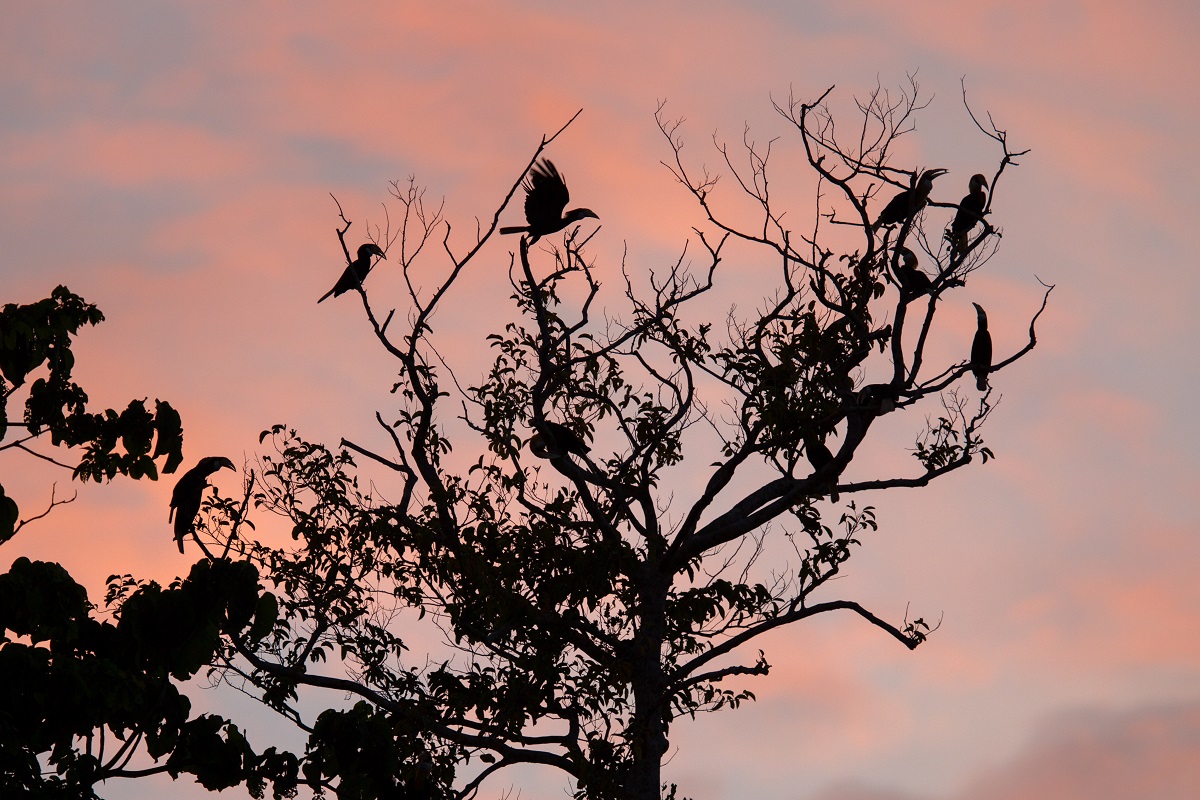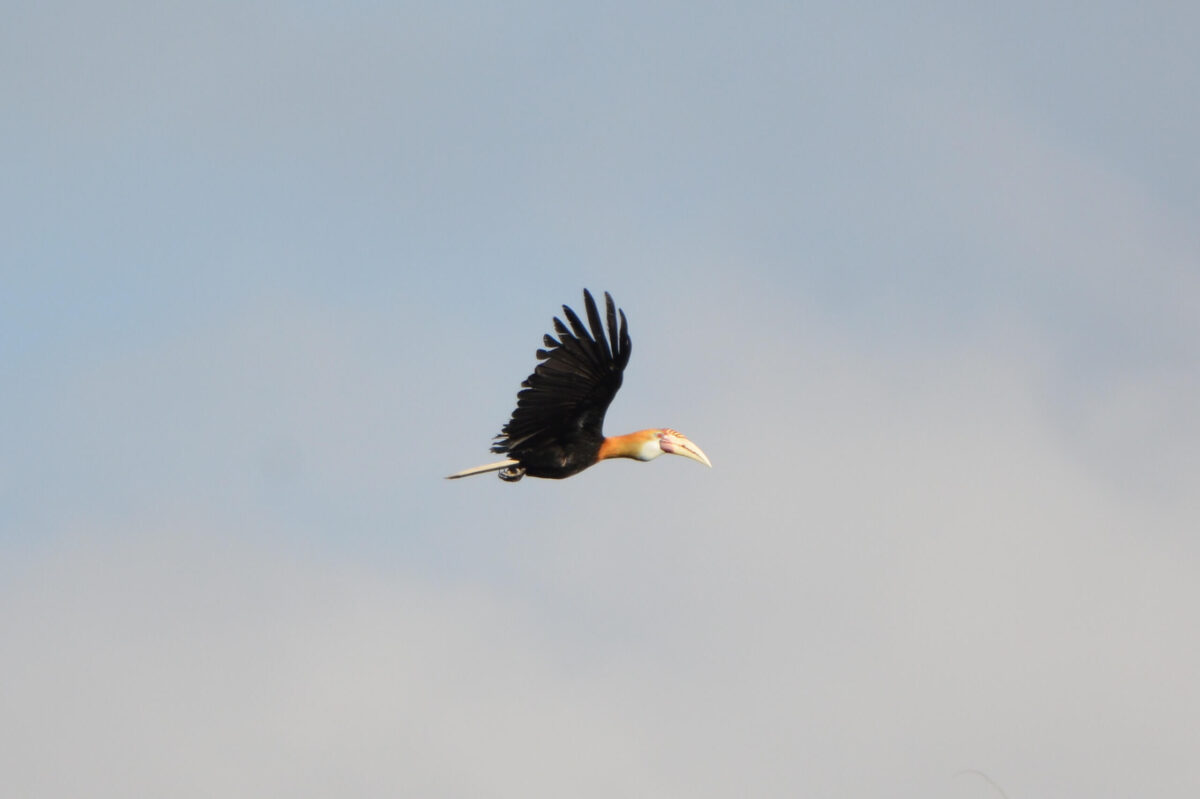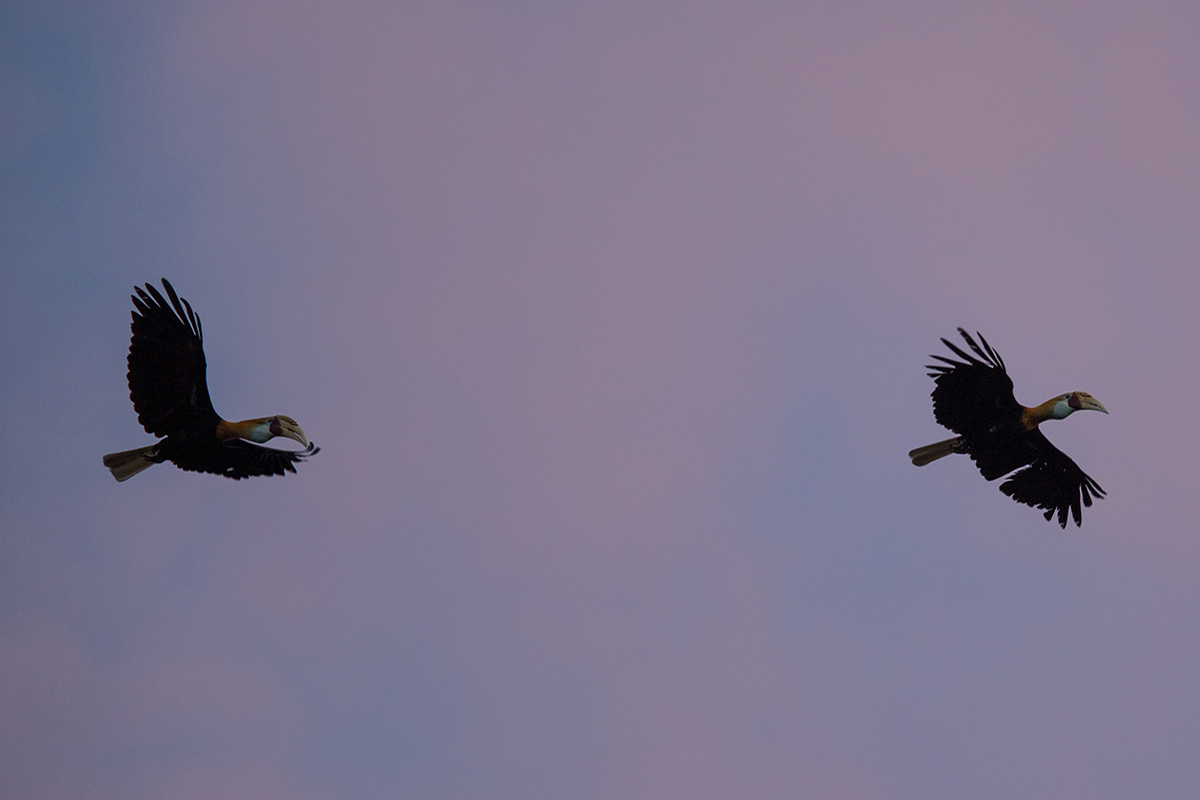Kokomo: the Incredible Hornbills of Raja Ampat
When it comes to birds, Raja Ampat might be more famous for its endemic bird of paradise species, but there is another species you must see while you are there. Locally called Kokomo, burung taun-taun, Blyth’s hornbill, or the Papuan hornbill, is a truly exquisite bird to see in the wild. Even if you aren’t a birding enthusiast, going on a hornbill tour is an exhilarating experience. Read on to learn more about these incredible birds.
Features and Size
Adult male and female hornbills are quite easy to tell apart. Males have mainly black plumage with a golden head and a white throat and a white tail. The female is a smaller, mainly black bird with a white throat and tail. The juveniles look more like the males but the females darken around the head as they mature.
Blyth’s hornbill may not be the largest hornbill species, but they definitely aren’t small birds. They can grow up to 90cm tall with a 1.8 metre wingspan. On a sunset hornbill tour from Papua Paradise Eco Resort you can hear their wings beating from quite a distance. When a large number of them come into roost together the air thrums with the sound of their wings.
The Sound of Hornbills
The sound of their wings isn’t the only sound you’ll hear when you visit the hornbills. They also call to each other with a sound that resembles a dog barking or even laughing coming from the trees. They make these sounds through their casque, the hard feature on the top of the hornbill’s beak. The casque acts as a sort of acoustic resonating chamber, allowing them to broadcast their territorial markers as well create sounds during mating season when they select a mate.
Romance Isn’t Dead
If you are a bit of a romantic, you will love hornbills’ dedication to their partner. When a male hornbill is wooing his chosen mate he will bring her delicious treats like fruit and other snacks. If she chooses him, they will stay together as mates for life.
One of the most unique things about Blyth’s hornbills is that when the female bird lays her eggs she will create a nest that she then seals herself inside using twigs, dirt, and saliva. She leaves a small opening for the male bird to deliver food through for her and their babies. This usually lasts up to 5 months so daddy hornbill has to be extremely dedicated to his family during this time.
If you are wondering how the mother keeps the nest clean during this long stretch of confinement, she presses her rear to a hole in the nest and shoots her excrement out. She also picks up the chicks’ excrement and throws it out of the slot in the top of the nest. Isn’t this amazing!
A hornbill tour is just one of the excursions you can add to your dive trip to Raja Ampat. Seeing some of the incredible wildlife above water as well as below is just the cherry on the top of a magical trip. Have you ever seen hornbills in the wild? We’d love to hear about it in the comments box below if you have.
Hornbill, excursions, Raja Ampat, Kokomo, Papuan hornbill, Blyth’s hornbill, birds, birding




